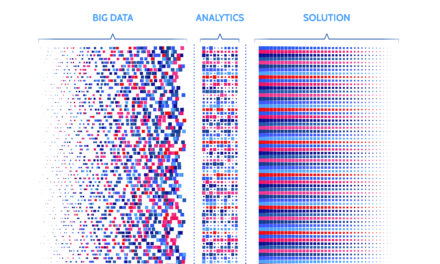
Amsterdam, courtesy of Patrick Clenet, CC BY-SA 3.0.
Last week, I discussed the first day of sessions at the 10th IPTI Mass Appraisal Valuation Symposium in Amsterdam. Day 2 had several sessions on the role of technology in property tax assessment. I found IPTI COO Ruel Williamson’s presentation on the history of technology particularly interesting. I also enjoyed Dr. Douw Boshoff’s discussion of South Africa’s property tax system and the steps taken there to modernize it.
The first session I attended after lunch started with Joseph Wehrli from Tyler Technologies, a provider of information management software and services for local governments, speaking about a knowledge-based approach to configurable property tax systems. It turns out that Joe is a fellow Georgia Tech Ramblin’ Wreck, which is why we got along from the start. [Go Jackets!]
Then, Gary DeWeese, MAI, of Real Estate Strategic Solutions, LLC, discussed how information on public real estate investment trusts (REITs) can be used to compute capitalization (cap) rates to value privately held real estate, especially when there are few sales transactions. Cap rates are computed directly using a standard formula—net operating income (NOI) divided by the value of the property, where the value of the property (the denominator) is the sum of the mortgage loans and non-convertible preferred stock on the REIT’s balance sheet plus the stock market price times the number of shares. According to DeWeese, when there are too few comparable sales to support the determination of cap rates, the public REIT market is a good alternative. REIT shares are more liquid and more volatile than private real estate. REIT investors accept more liquidity in exchange for more volatility; private investors accept less liquidity in exchange for less volatility. Volatility differences can be mitigated by using the average stock price with a 30-day lag. For assignments like the one DeWeese used in his example, data aggregators such as SNL Research would speed up the process. DeWeese noted that a historical study needs to be done to assess the correlation between values and cap rates derived from public REIT markets and values and cap rates derived from private real estate markets.

Harrods of Knightsbridge, courtesy of Christine Matthews, CC BY-SA 2.0.
In the same session, consultant Blake Penfold discussed the valuation of specialized properties, which seems to be a bit afield from the mass appraisal focus of the conference, except when you consider that so-called “specialized” properties are found in every jurisdiction. Also, Penfold’s discussion was about specialized properties where the brand is difficult to separate from the property. His basic question is whether the value of a particular property is in the property itself or in the brand of the company occupying the property. One example would be Harrods, the famous department store founded in 1834 in London’s Knightsbridge neighborhood.
Later that afternoon, the final session of the conference showcased lessons learned from mass appraisal assignments all over the world. Ingi Finnsson, deputy head of valuations and economics for Registers Iceland, discussed the Iceland experience. The country has a population of 320,000, with the largest concentration in Reykjavík, the capital. His organization’s two main valuation tasks are determining market value and using these value assessments to inform mandatory fire insurance coverage. According to Finnsson, punch cards were used in 1965 to conduct the first computerized mass valuation of residential properties in Reykjavík. This required 3 weeks of calculations on three different computers and took a total of 6 years to complete the process. At the time, apartments were valued individually. Lessons learned include that infrequent revaluations are always more costly and time-consuming, mainly because of the institutional memory loss from the previous valuation. According to Finnsson, more frequent valuations do not suffer from such a loss of institutional memory.
Then, in 1994, Iceland migrated to an online valuation system that covered the entire country. In 2001, Iceland introduced a geographic information system (GIS) department and the first regression-based valuation methodology to property tax assessments. Then, in 2014, Iceland introduced the income approach for valuing commercial properties. The result was major pushback from stakeholders, primarily because they didn’t understand the process. But, the government learned that being up-front with property owners leads to fewer appeals—the appeal rate was 4% in 2014, down from 10% in 2001.
In the same session, Richard Borst of Tyler Technologies talked about comparable selection using distance metrics to determine the appropriate number of comparable sales transactions (comps). The focus of his discussion was “why five comps?” Basically, Borst took two datasets and conducted trials, starting with two comps and going up to ten or so comps, on condos in Beijing and residences in Scarsdale, New York. His metric for determining the optimal number of comps is the coefficient of dispersion (COD) at different numbers of comps. What he found was that his metric was optimized at five comparable sales. While this research was only performed for two jurisdictions, it is an interesting idea to expand the number of locations to see how this result holds across many more areas.
The final speaker in the session was Piet Eloff, Municipal Valuer of the City of Johannesburg, who discussed the valuation changes occurring in Johannesburg, South Africa.
Overall, the symposium was well attended (more than 100 assessment officials and researchers from more than 20 countries). I was pleased with how well my research was received by the audience. Already I have had several folks approach me about future work on items as diverse as tax assessment audits and supply/demand studies. I certainly hope that I am asked back to speak again in future years.






Recent Comments